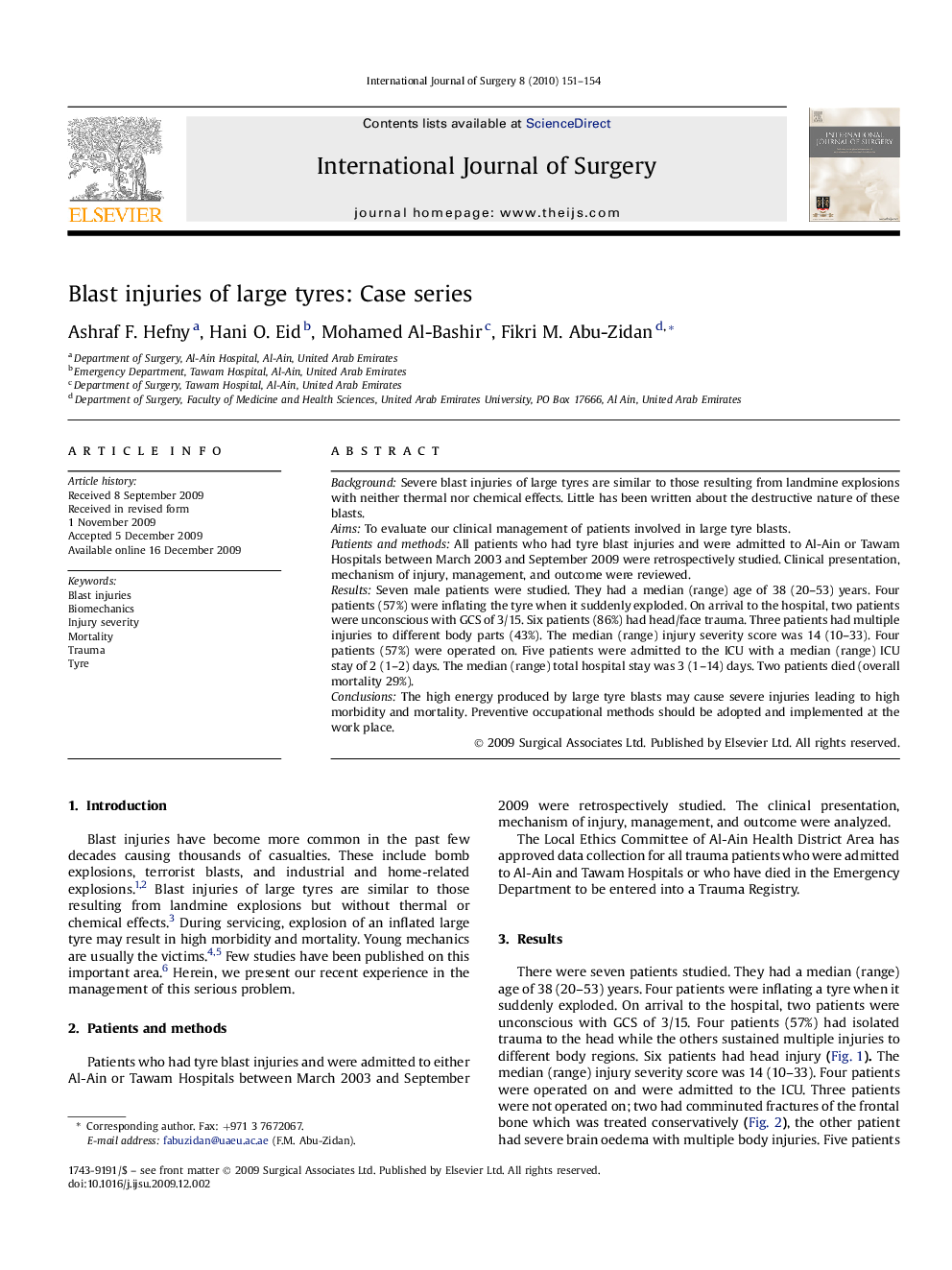| Article ID | Journal | Published Year | Pages | File Type |
|---|---|---|---|---|
| 4287825 | International Journal of Surgery | 2010 | 4 Pages |
BackgroundSevere blast injuries of large tyres are similar to those resulting from landmine explosions with neither thermal nor chemical effects. Little has been written about the destructive nature of these blasts.AimsTo evaluate our clinical management of patients involved in large tyre blasts.Patients and methodsAll patients who had tyre blast injuries and were admitted to Al-Ain or Tawam Hospitals between March 2003 and September 2009 were retrospectively studied. Clinical presentation, mechanism of injury, management, and outcome were reviewed.ResultsSeven male patients were studied. They had a median (range) age of 38 (20–53) years. Four patients (57%) were inflating the tyre when it suddenly exploded. On arrival to the hospital, two patients were unconscious with GCS of 3/15. Six patients (86%) had head/face trauma. Three patients had multiple injuries to different body parts (43%). The median (range) injury severity score was 14 (10–33). Four patients (57%) were operated on. Five patients were admitted to the ICU with a median (range) ICU stay of 2 (1–2) days. The median (range) total hospital stay was 3 (1–14) days. Two patients died (overall mortality 29%).ConclusionsThe high energy produced by large tyre blasts may cause severe injuries leading to high morbidity and mortality. Preventive occupational methods should be adopted and implemented at the work place.
